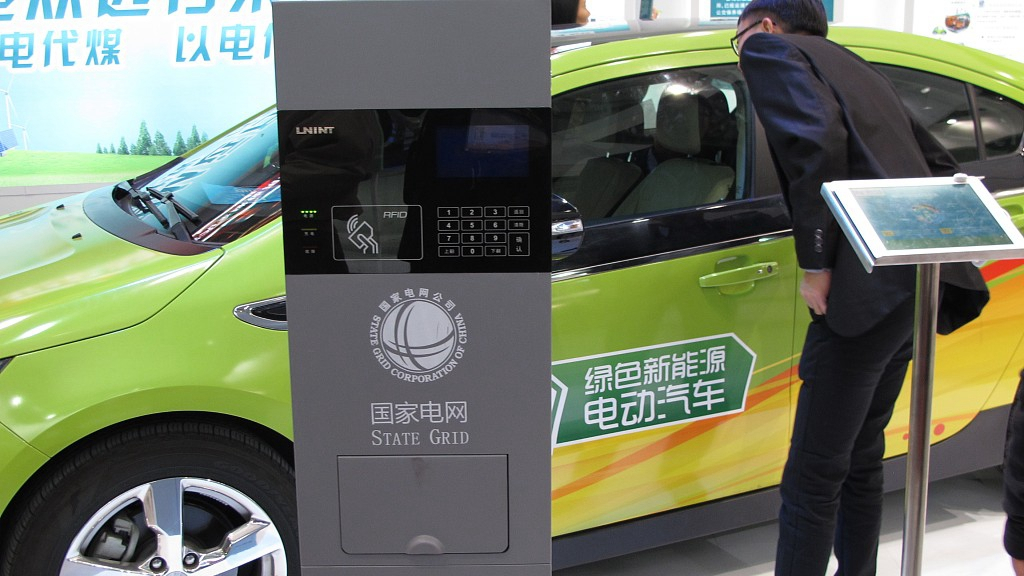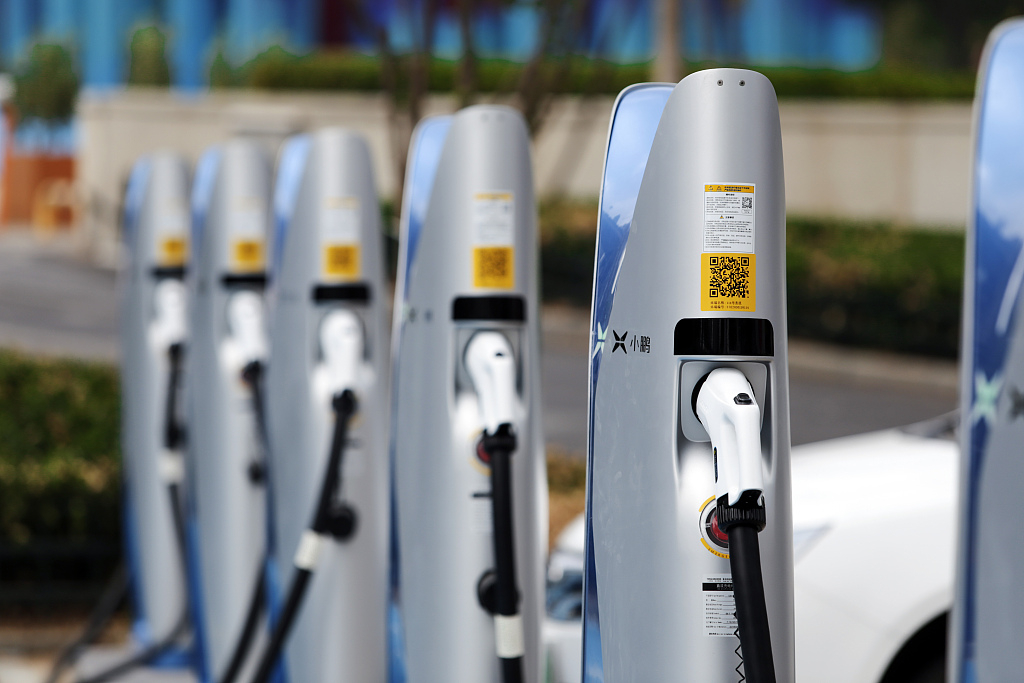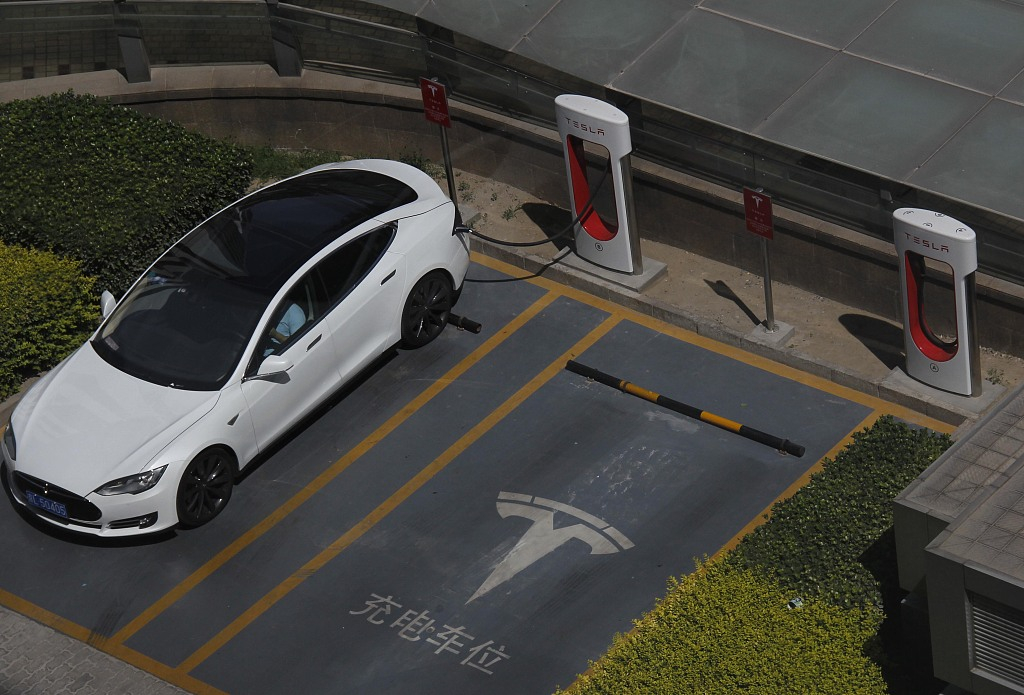02:52

With over three and a half million electric vehicles (EV) on the road, China is in need of chargers.
In the capital city of Beijing, over 13,000 new chargers have been installed this year. Almost 480,000 public ones are up and running, and some charge faster than others.
That's more than eight times the total number of the public chargers in the United States.

Charging station in China. /VCG Photo
Charging station in China. /VCG Photo
With the number of chargers on the rise, global sales of gas guzzling vehicles have slowed. In 2019, that growth rate has so far dropped by 0.84 percent, and it's estimated to fall another 1.85 percent next year. At the same time, growth rates for EVs are slated to be 55.4 percent for this year and 47.4 percent for 2020.
The International Energy Agency says the growth of EVs will shrink fossil fuel usage by about four million barrels a day.
Energy switching is essential to the carbon emission reduction, said Xu Yanhua, secretary-general of China's Electric Vehicle Infrastructure Promotion Alliance.
"As the signatory nation of the Paris agreement, China is committed to that," Xu said, noting the second largest economy rolled out its plan for fuel-efficient cars in 2012 and regulated steps for electrification.
What matters in terms of charging infrastructure is service efficiency, Xu added.
Uni-EV, a leading EV service startup based in Beijing, launched the App YeahCharge this year.
YeahCharge tells you the location of the nearest stations, as well as prices and the number of available rapid and slow chargers. This addresses some of the anxieties drivers used to have.
During the National Holiday in October, the company followed two users' trips from Beijing to Xi'an and Guangzhou for feedbacks.
"They found it convenient to locate chargers and finished their fun trips," said Zhang Junjun, CTO of Uni-EV.
According to Zhang, chargers installed after 2015 are likely more efficient, as each may serve an average of ten users a day. "China's prior infrastructure was to boost EV buyers' confidence."

Tesla's EV chargers in China. /VCG Photo
Tesla's EV chargers in China. /VCG Photo
Tesla has also prioritized the installation of its own chargers, as the American EV maker this year kicked off the operation of Shanghai factory with an annual ramp-up of 500,000 vehicles.
So far, about 3,000 chargers, including 1,000 superchargers, have been installed. In Beijing, Tesla has one of the world's three largest charging stations.
But Tesla is not alone in terms of boosting the driver's confidence.
German automaker Volkswagen is concluding two EV factories in China next year, aiming to have 100,000 more vehicles on China's roads than Tesla. That goal will scale up its charging stations, bypassing Tesla on the key battleground in China.
At home, the German government's Climate Protection Program settled on a plan to have 10 million electric cars by 2030, mapping out fresh and generous subsidies.